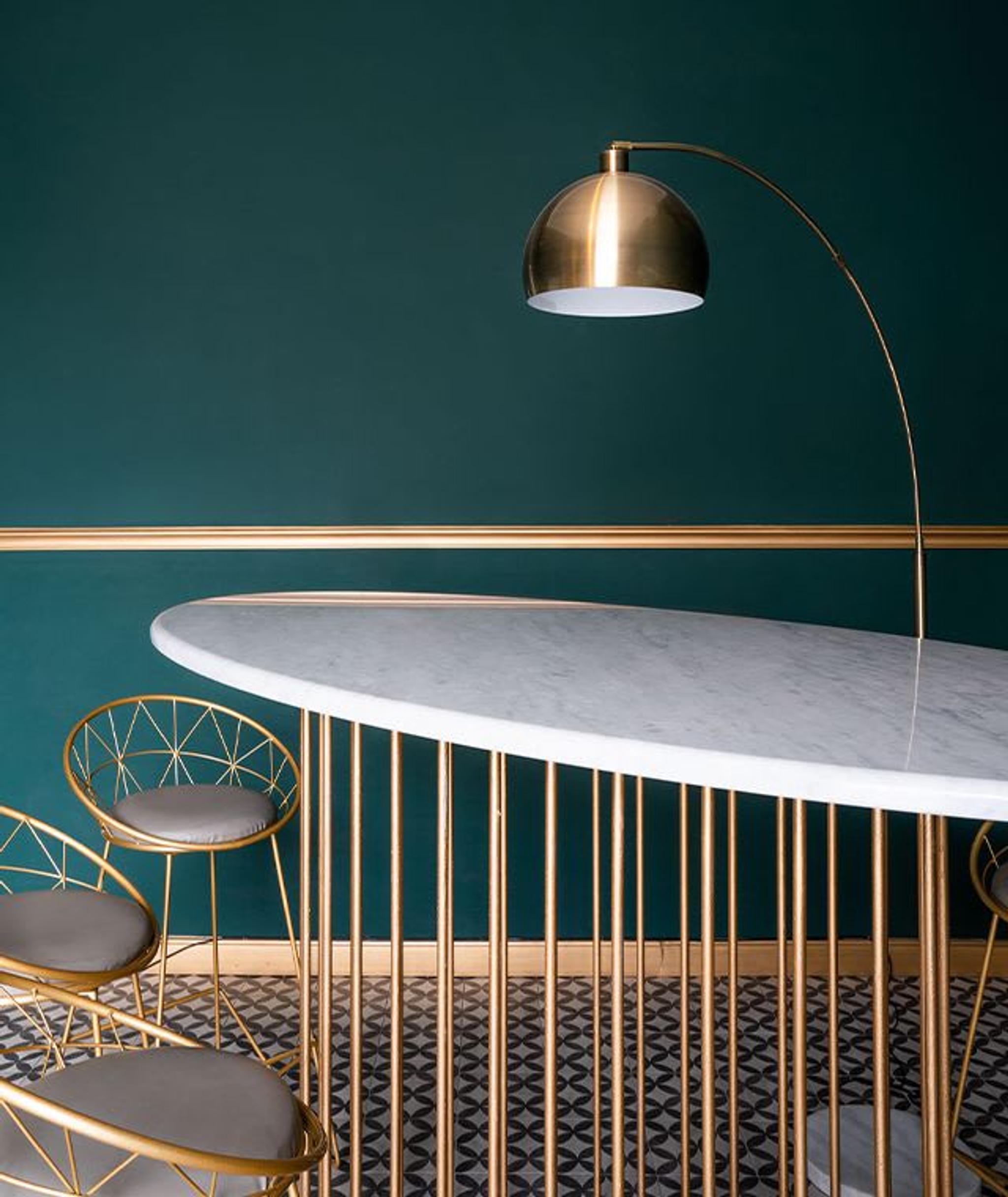
ETRO Home Interiors
Woodstock Coffee Table
USD 21,265
Ships in 12-13 weeks

Step inside the eighteenth-century Palazzo De Franciscis in Marcianise, meticulously restored by Antonio di Maro and reinvented as a lounge bar: a dialogue between contemporary design and timeless neoclassical architecture


KLU bar is located inside an 18th-century palazzo: how did you accomplish the intersection between ancient and contemporary design?
Accomplishing any restoration project, one that captures the dialogue between the ancient and contemporary, requires historic research, a passionate effort to uncover the tangible and intangible value of individual artifacts. The entire pre-existing structure - from the building type to the materials, as well as any individual element - must be studied thoroughly to ensure that the restoration recaptures the original splendor of the place and, wherever necessary, introducing strong and recognizable contemporary elements that may even contrast with the original character of the piece so long as they can be removed. My motto is: "It is wise to dust off the ancient and noble lady without distorting her original features, the admirable signs of the past: architecture is like a history book come to life". Italy is rich with precious historic treasures and it preserves, alas often with neglect, notable examples of architecture. The challenge for today's designers lies in recovering, enhancing, and presenting these hidden treasures in new ways.
"It is wise to dust off the ancient and noble lady without distorting her original features, the admirable signs of the past: architecture is like a history book come to life"

What decorative object did you enjoy selecting the most?
Historic research was fundamental in the choice of all the elements that have been added to the magnificent pre-existing architectural structure. I have immensely enjoyed delving into the study of the period fabrics and drapery manufactured at the Bourbon silk factories in San Leucio, ancient silk factories established under the wise patronage of the Bourbon dynasty. The hill of San Leucio in Caserta was a great example of quality and excellence in the textile sector: the silks from San Leucio embellish Buckingham Palace, the Quirinale, the Vatican, and the Oval Office in the White House. We created curtains and coverings using the same ancient weaving techniques used back then, always striving for consistency with the historical period. Similarly, we greatly enjoyed selecting the sofas and seatings, in this case by identifying elements that, although from a different era, could fit harmoniously in the interiors.
What is the central element that defines the KLU bar’s character and identity?
In truth, it is impossible to pinpoint a single element that gives the KLU bar its distinctive character. It cannot be reduced to a pure and simple combination of elements. The KLU bar is unique in what it offers to its guests: a multisensory experience that allows you to “breathe in” history and discover art, from the pre-existing elements - well represented by the frescoed vaults in floral style depicting intertwined vine on a poplar tree or the fresco on the party hall backdrop visible from the entrance, both realized by Vincenzo Torelli - to the contemporary ones - with pieces belonging to both permanent and temporary exhibits. You are surrounded by music during the live performances and, at the same time, savor the gourmet food and wine from all over the world in a space created with a rigorous search for beauty in all its forms. The outdoor terrace, characterized by a Moroccan style (inspired by my passion for this part of the world) is the only uncontextualized element, emerging from a pre-existing outdoor space ravaged by excessive past construction work and therefore no longer salvageable.

How did the history and geography of Campania Felix - the region of Campania - influence this project?
I believe that architecture as a whole must always be designed in strict synergy with where it is being built, even more so in the case of KLU bar, whose intent is to bring an ancient noble palace back to its original splendor. References to the “Campania Felix”, a land full of possibilities, can be found everywhere in the building, first and foremost in the entirely frescoed entrance curtain. Restoration work has preserved and enhanced the ancient and precious original features. KLU bar in its current set-up reveals the story of the palace through the juxtaposition of traditional elements alongside contemporary ones.
How did you develop and design the lighting in the different spaces?
A good lighting engineering plan should be at the core of any architectural project. At KLU bar, the light sources are calibrated and designed to offer multiple lighting "scenarios", useful for setting up any desired ambiance: from diffused light created by large chandeliers positioned at the center of the room, and 2000k-light arrangements designed to enhance the perimeter, to spotlights fixed on specific points or large frescoes. Purely technical hidden light sources (5000k) were installed in the staff-only areas for cleaning purposes.



ETRO Home Interiors
USD 21,265
Ships in 12-13 weeks

Esperia Luci
USD 3,840
Ships in 8-9 weeks

Black Tie
USD 6,430
Ships in 5-6 weeks

Lorenza Bozzoli Couture
USD 2,495
Ships in 3-4 weeks

Durame
USD 2,310
Ships in 3-4 weeks

Domingo Salotti
USD 630
Ships in 11-12 weeks

Marioni
USD 4,555
Ships in 7-8 weeks

Francesco Della Femina
USD 2,070
Ships in 3-4 weeks

Agapecasa
USD 10,220
Ships in 5-6 weeks

Mario Milana
USD 3,280
Ships in 5-6 weeks

Tato
USD 1,995
Ships in 3-4 weeks

Salvatori
USD 8,620
Ships in 4-5 weeks

Atlasproject
USD 675
Ships in 4-5 weeks

CPRN Homood
USD 5,290
Ships in 8-9 weeks

Studio Le Nid
USD 145
Ships in 2-3 weeks

Perched on top of Orvieto hamlet, is located Palazzo Petrvs, a charming residence where time stand…

In the heart of the historical Monti district of the city of Rome, lies the artistic house Casa Mo…